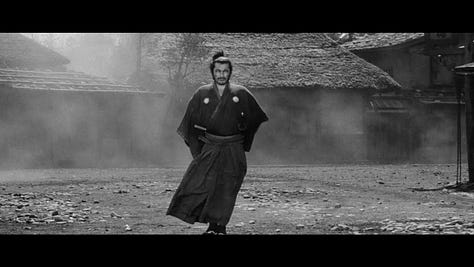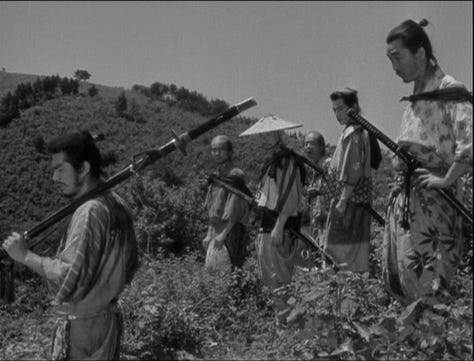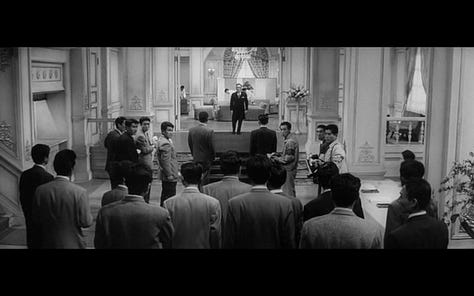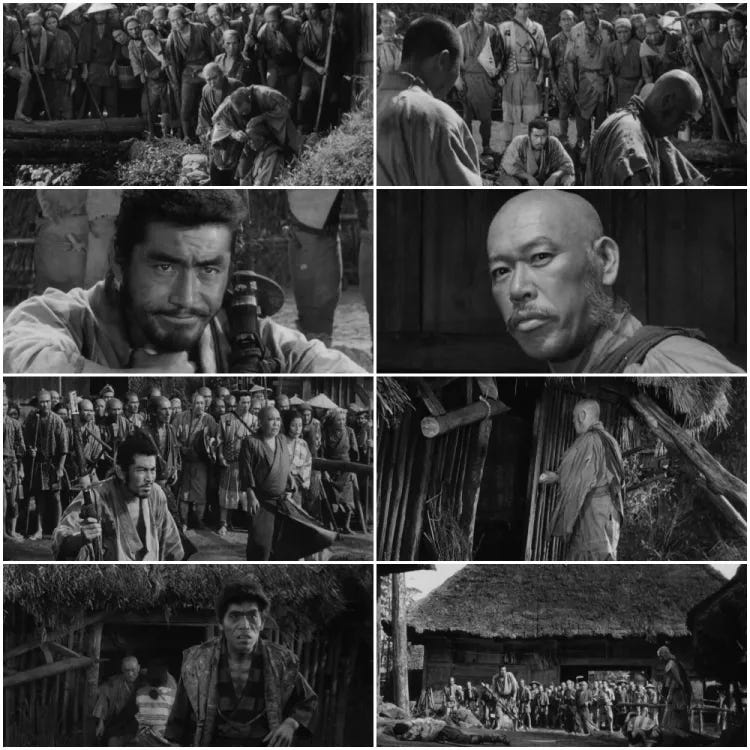


Ever feel like your photos are technically good but lack that cinematic oomph? That they capture the subject, but not the story or the feeling? You might be missing a powerful compositional tool borrowed straight from the stage and screen: Blocking.
As a photographer constantly seeking to make my images resonate deeper, I discovered a game-changer by looking beyond traditional photography guides and into the world of theatre and film. Specifically, the concept of **blocking**, used masterfully by directors like Akira Kurosawa, holds incredible power for crafting compelling photographs.
What is Blocking? (Think Theatre, Not Instagram!)
In theatre and film, blocking refers to the precise planning and arrangement of actors' positions, movements, and interactions within a defined space (the stage or frame) relative to each other and the scenery. It's not random; it's deliberate choreography designed to:
1. Convey Meaning & Emotion: Where characters stand reveals power dynamics, relationships, isolation, or unity.
2. Direct the Audience's Eye: Blocking guides viewers to the most important elements and creates visual flow.
3. Establish Setting & Depth: Positioning actors within the environment clarifies spatial relationships and creates a sense of place.
4. Enhance Visual Interest: Creating dynamic shapes and lines within the frame makes the composition inherently stronger.
From Stage to Still Frame: Blocking in Photography
As photographers, we aren't directing live actors (usually!), but we are directors of our visual elements within the frame. Everything within our viewfinder is a potential "actor" or piece of "scenery":
* Your human subject
* Animals
* Leading lines (roads, paths, rivers)
* Foreground elements (rocks, branches, windows)
* Background elements (mountains, buildings, sky)
* Light and shadow shapes
* Colour blocks
Blocking, in photography composition, means consciously arranging these elements within your frame to achieve specific visual and narrative goals. It's about moving beyond just placing your subject dead centre or on a rule-of-thirds intersection and thinking about the relationships and spatial dynamics between all parts of the image.
Learning from the Master: Kurosawa's Blocking Brilliance
Akira Kurosawa was a legendary filmmaker renowned for his meticulous compositions and powerful visual storytelling. His use of blocking is textbook-worthy. Let's see how his techniques translate to our still photography:
1. Creating Depth & Scale (Like in Seven Samurai):
* Kurosawa: Often positioned characters at distinct distances within deep-focus shots. Think of the farmers huddled together in the foreground, the samurai standing resolutely mid-ground, and the village or looming threat in the background. This layered blocking creates immense depth and emphasises the scale of the conflict or landscape.
* Your Photography: Don't let your scene look flat! Use blocking consciously. Place a distinct foreground element (a rock, archway, or person) sharply in the frame. Position your main subject clearly in the mid-ground. Ensure the background adds context without competing. This layered approach instantly adds cinematic depth. Think: "Foreground Anchor - Mid-ground Subject - Background Context."
2. Revealing Power Dynamics & Relationships (Like in Throne of Blood or Rashomon):
* Kurosawa: Used physical positioning to show hierarchy, tension, or intimacy. A character standing above others signifies dominance. Characters positioned close together, facing the same way, imply alliance. Characters turned away from each other suggest conflict or disconnection. The rigid, formal blocking in Throne of Blood visually reinforces the oppressive power structures.
* Your Photography: How are your subjects positioned relative to each other and the environment? Are they looking at each other? Away? Is one physically higher? Are they connected by leading lines or separated by barriers? A couple standing close, slightly overlapping, facing each other tells a different story than two people far apart, facing away, even in the same location. Block their positions to tell the story you want.
3. Using Shapes & Geometry (Like in Rashomon's Courtyard or Ran's Battle Scenes):
* Kurosawa: Composed frames using strong geometric shapes – triangles formed by characters, powerful verticals (trees, pillars), sweeping diagonals (swords, paths). This deliberate blocking creates visual order, tension, dynamism, or harmony within often chaotic scenes. The chaotic yet visually structured battle scenes in Ran are prime examples.
* Your Photography: Look for or create geometric relationships. Position your subject so their form creates a triangle with background elements. Use architecture or nature to frame them within rectangles or arches. Have lines in the scene (a path, a wall, shadows) converge towards your subject. Block elements to form strong, clean shapes within your frame. This adds structure and visual impact.
4. Directing the Viewer's Eye (Fundamental to All Kurosawa Frames):
* Kurosawa: Every element placement served a purpose in guiding the audience's gaze. Movement, lines of sight, light/dark contrast, and spatial relationships all worked together to ensure the viewer saw the crucial story beat.
* Your Photography: Blocking is your primary tool for visual flow. Where do you want the viewer to look first? Second? How do you lead them through the frame? Position key elements along natural sight lines created by other elements or the environment. Use contrasting light or colour to make your main subject the unavoidable focal point. Block distracting elements out of key positions. Ask yourself: "What's the visual path through my image?"
How to Start "Blocking" Your Shots Like a Director:
1. See the Stage: Before raising your camera, actively observe the entire scene. Identify all your potential "actors" (key subjects) and "scenery" (background, foreground, lines, shapes).
2. Define the Relationship: What's the story or feeling? Power? Isolation? Connection? Scale? Joy? Let this guide your blocking decisions.
3. Choreograph Movement (Yours & Theirs): Physically move yourself (change your vantage point!). Ask subjects to move slightly. Adjust your framing. Reposition foreground objects if possible. Experiment with layering.
4. Check the Geometry: Look for triangles, leading lines, frames within the frame. Can you strengthen these shapes by adjusting positions?
5. Mind the Gaps: Pay attention to the negative space – the space between subjects and elements. Is it working for or against your composition? Blocking defines these spaces intentionally.
6. Light is a Character: Where is the light falling? Block your subjects and elements to take maximum advantage of highlights and shadows for depth and mood.
Conclusion: Compose with Purpose, Not Just Placement
Blocking transforms composition from a rule-based exercise (like the rule of thirds) into a powerful storytelling and mood-setting tool. By thinking like a theatre or film director – consciously arranging every element within your frame for maximum meaning and visual impact – you elevate your photography from simple documentation to intentional visual art.
Take a page from Kurosawa's playbook. Slow down. Observe the stage. Choreograph your elements. Block your shot. You'll be amazed at the cinematic depth and narrative power you can bring to your still images. Now go direct your masterpiece!




